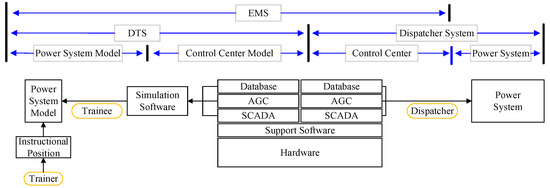Recent Development of Smart Grids and Microgrids in China (Closed)
A topical collection in Energies (ISSN 1996-1073). This collection belongs to the section "A1: Smart Grids and Microgrids".
Viewed by 4119Editor
2. School of Energy, Chengdu University of Technology, Chengdu 610059, China
Interests: power system wide-area measurement and control; informatics for smart electric energy system; smart grid and energy internet
Special Issues, Collections and Topics in MDPI journals
Topical Collection Information
Dear Colleagues,
Today, with the growing concerns about the environmental effects of electricity generation, transmission, and distribution, the concepts of smart grids and microgrids have received considerable attention in both the industrial and academic communities. Chinese scientists have made great contributions to the basic science and engineering of smart grids and microgrids, with China currently holding the largest number of publications in this field. Therefore, this issue on “Recent Development of Smart Grids and Microgrids in China” aims to provide a platform to demonstrate the innovation of Chinese scientific and technological works in theoretical research and engineering research on smart grids and microgrids technologies, reporting the latest research progresses in China.
The main topics of the section include but are not limited to:
- Multienergy systems and microgrids;
- Hybrid microgrid power systems;
- Energy storage management;
- Power quality, grid monitoring, and smart metering;
- Innovative measurement and metrology for smart grids and microgrids;
- Synchronization technology for smart grids and microgrids;
- Stability analysis of microgrids;
- Operation and advanced control systems for smart grids and microgrids;
- Impedance modeling of microgrids;
- IoT integration for smart grids and microgrids;
- Cybersecurity, reliability, and resiliency in smart grids and microgrids;
- Microgrid protection;
- Regulatory framework impact on microgrids;
- Demand response and demand-side management;
- Electric vehicle integration;
- Energy internet;
- Computing and communication technologies applications for smart grids and microgrids.
Prof. Dr. Qi Huang
Collection Editor
Manuscript Submission Information
Manuscripts should be submitted online at www.mdpi.com by registering and logging in to this website. Once you are registered, click here to go to the submission form. Manuscripts can be submitted until the deadline. All submissions that pass pre-check are peer-reviewed. Accepted papers will be published continuously in the journal (as soon as accepted) and will be listed together on the collection website. Research articles, review articles as well as short communications are invited. For planned papers, a title and short abstract (about 100 words) can be sent to the Editorial Office for announcement on this website.
Submitted manuscripts should not have been published previously, nor be under consideration for publication elsewhere (except conference proceedings papers). All manuscripts are thoroughly refereed through a single-blind peer-review process. A guide for authors and other relevant information for submission of manuscripts is available on the Instructions for Authors page. Energies is an international peer-reviewed open access semimonthly journal published by MDPI.
Please visit the Instructions for Authors page before submitting a manuscript. The Article Processing Charge (APC) for publication in this open access journal is 2600 CHF (Swiss Francs). Submitted papers should be well formatted and use good English. Authors may use MDPI's English editing service prior to publication or during author revisions.
Keywords
- multienergy systems and microgrids
- hybrid microgrid power systems
- energy storage management
- power quality, grid monitoring, and smart metering
- innovative measurement and metrology for smart grids and microgrids
- synchronization technology for smart grids and microgrids
- stability analysis of microgrids
- operation and advanced control systems for smart grids and microgrids
- impedance modeling of microgrids
- IoT integration for smart grids and microgrids
- cybersecurity, reliability, and resiliency in smart grids and microgrids
- microgrid protection
- regulatory framework impact on microgrids
- demand response and demand-side management
- electric vehicle integration
- energy internet
- computing and communication technologies applications for smart grids and microgrids







